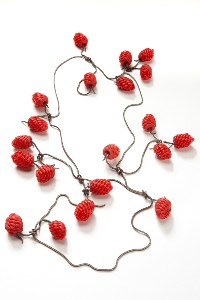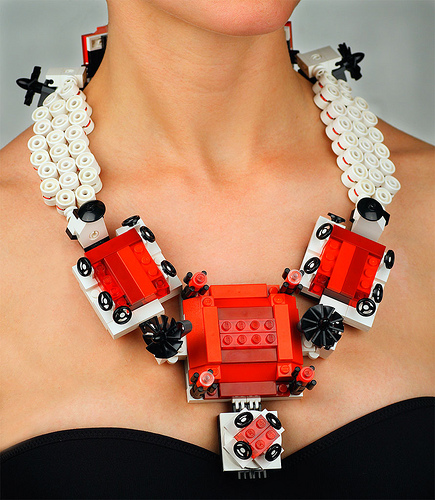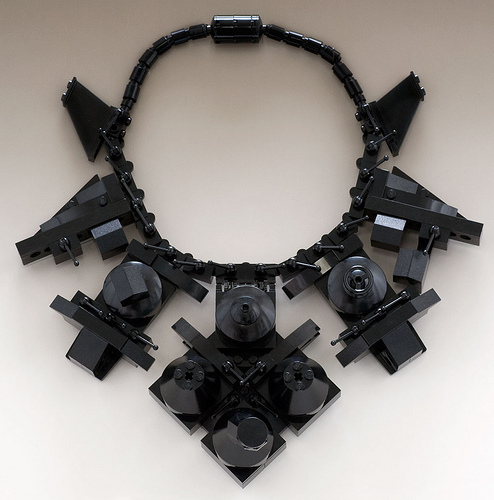

The curators/jurors of Decorative Resurgence, Jill Baker Gower and Jessica Calderwood, write that the work was selected because it ‘successfully re-contextualized the chosen historical decorative influence into thoughtful and contemporary art as well as illustrated research and knowledge of the decorative inspiration.’ They also suggest that ornament is used by these jewelers in a number of different ways: ‘to add emotion, memory or sentiment; to create social commentary; to interpret nature; to acknowledge, commemorate or honor a lineage, history, or a historic process; to evoke nostalgia; to make gender or age associations; to create cultural connections; and to convey fragility or loss.’ No wonder ornament is having such a good run: it can do almost anything.
For Lena Vigna and Namita Gupta Wiggers writing in Metalsmith, the question is how contemporary jewellers are engaging with the trend towards ornament that has swept the industrial design world. As they write: ‘A contemporary vocabulary is emerging in which the baroque, the rococo, the curvilinear and the unabashedly ornate features of historic jewelry are taking a new, redefined center stage. Artists are looking backwards to look forward, democratizing forms and patterns previously preserved for royalty through a range of new materials (from precious to industrial) and via such unexpected vehicles as T-shirts and installations.’
Vigna and Wiggers go on to identify five ways that contemporary jewelers use ornament: fragmenting and abstracting historical forms, employing new technologies, creating new versions of ‘familiar’ jewels, neutralising markers of luxury and examining the relationship between jewellery, the body and space.

440 mm long (approximately)
In Lisa Walker’s recent book, Unwearable, Paul Derrez from Galerie Ra in Amsterdam wrote that contemporary jewelry is currently shaped by ‘A zeitgeist in which the focus is on complex beauty: sculptures and structures that are refined, glamorous and rich-looking – magical and imposing in the way historical jewellery can be.’ His point is that Walker’s work is too raw and confrontational to function well in such a historical moment. I’m not suggesting that jewelers should have to function as Walker does, in either process or materials, but I think there is something to be said for being raw and confrontational rather than smooth and easy. Maybe we should take a bit more time to sort out the ornamented and tough jewelry from the work that looks great in the current zeitgeist, but which won’t be capable of holding our attention when we decide beauty might just be skin deep after all.






